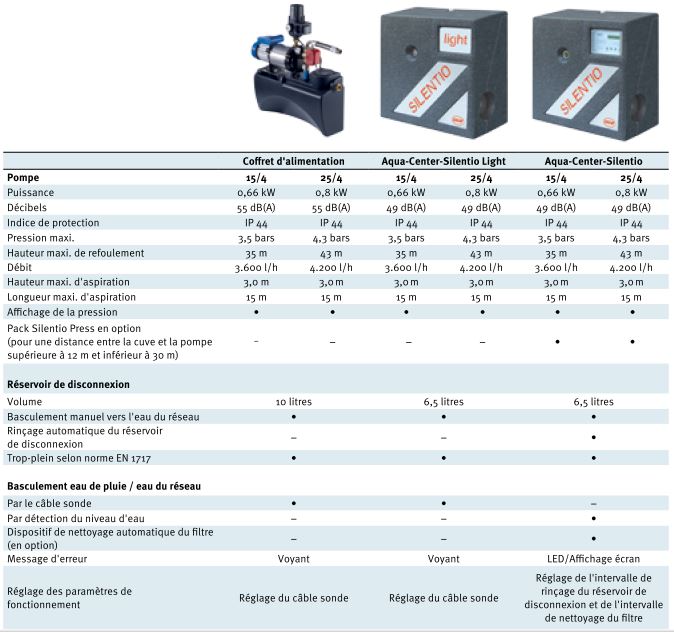What regulations for rainwater harvesting?
Rainwater harvesting is subject to strict regulations defined by the decree of 21 August 2008. In the context of domestic use, the regulations define the rules set out below:
See articles on rainwater harvesting
The rights:
Rainwater collected downstream of inaccessible roofs can be used for domestic purposes outside the building such as:
- Watering
- External flushing and cleaning
In the inside of a building, rainwater collected downstream of inaccessible roofs, other than asbestos cement or lead, may only be used for:
- The supply of toilets
- Floor washing
- The supply of water to the washing machine subject to suitable treatment.
Homework:
Rainwater can be collected exclusively downstream of your roof, as long as it is not accessible (except to ensure its maintenance and upkeep). The storage of water can be in an above-ground or buried tank.
No antifreeze products should be applied to the storage tank.
If the rainwater harvesting and use installation involves the discharge of wastewater into the sewerage system, especially when the rainwater is used for indoor uses, a declaration of the installation must be made to the town hall.
Rainwater is not potable (microbiological infection, acidic pH, physical-chemical pollution due to atmospheric pollution).It is therefore advisable to secure the installation to prevent any ingestion of this water by the inhabitants of the house and any contamination of the public network.
What regulations apply for rainwater harvesting?
The rainwater valves must be lockable (blocked). Their opening must be provided with a specific tool, not permanently linked to the tap.
.In addition, it is prohibited to install a tap dispensing rainwater in a room where there are taps dispensing drinking water (except in cellars, basements and other ancillary rooms such as a garage for example).
To ensure the continuity of the water supply especially for indoor uses (WC, washing machine) when the tank is empty, the rainwater distribution system can be connected to the public drinking water network with a manual or automatic switchover from one to the other.
If this is the case, then the connection is provided by a system of disconnection of the networks by total overflow.
read the official article from Service-Public.fr
We offer 2 rainwater management consoles (Silentio) in the home withautomatic switchover to the drinking water network equipped with a disconnection tank.
The installation should be regularly monitored and cleaned. To do this, any point inside the rainwater tank must be reachable for cleaning.
.
All of our tanks are therefore fitted with a manhole inspection dome with a diameter of 600 mm in which the filtration system is located.
Thesechecks and maintenance are even more important if you are a landlord with the following obligations:
- A check every6 months of the cleanliness of the equipment, the presence of the "non-drinking water" nameplates and the absence of a connection between the network intended for human consumption and the rainwater distribution network.
- At the annual cleaning of the filters, the tank and the verification of the valves and taps for drawing off.
- A sanitary logbook including, among other things, the plans of the installation, a commissioning sheet, the dates of verification and maintenance, the reading of the indexes of the rainwater volume evaluation systems connected to the wastewater collection network.
Find allour videos about rainwater harvesting tanks as well as this video from GRAF:
Sources:
Article from the Ministry of Health: "Domestic use of rainwater"
Article from the Ministry of the Interior on declaring your tank: "Rainwater harvesting"
See articles on rainwater harvesting

